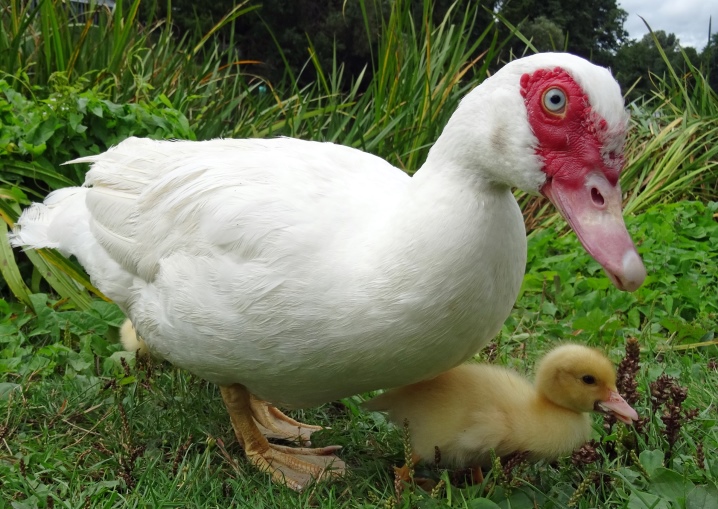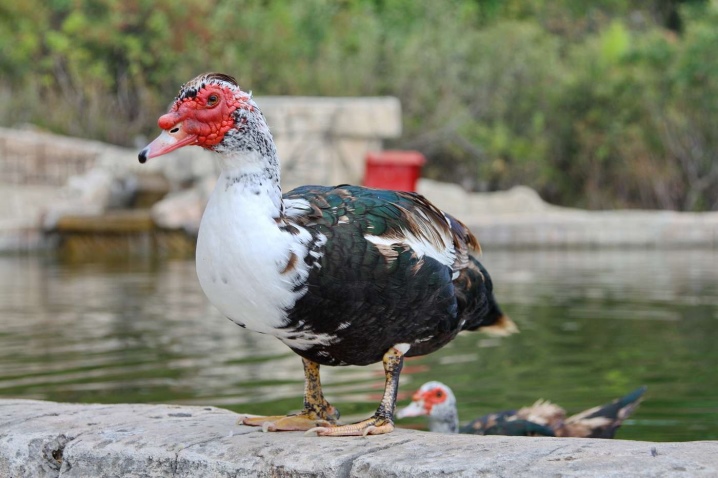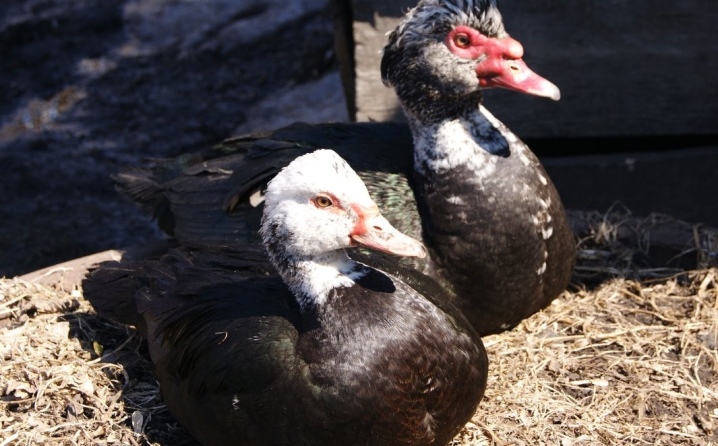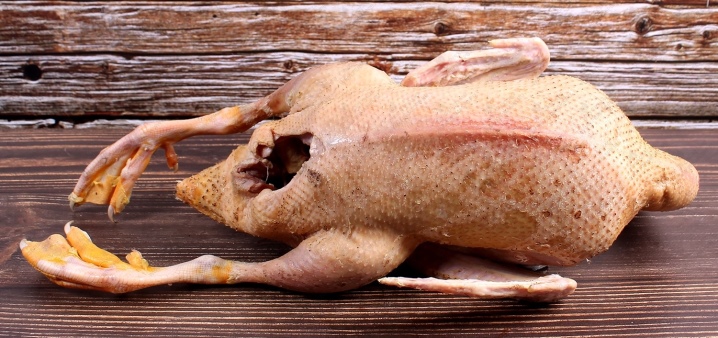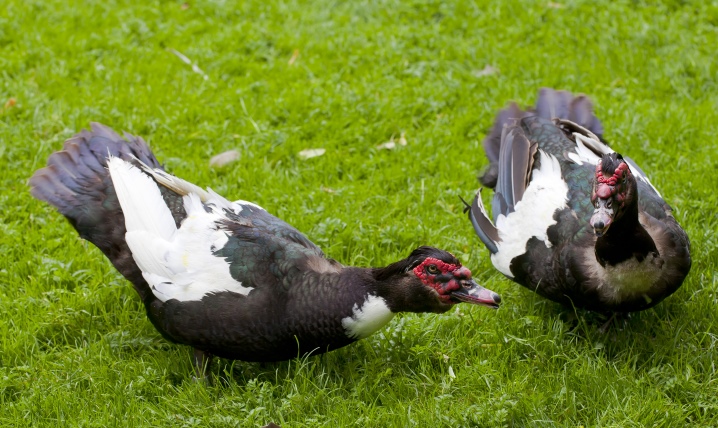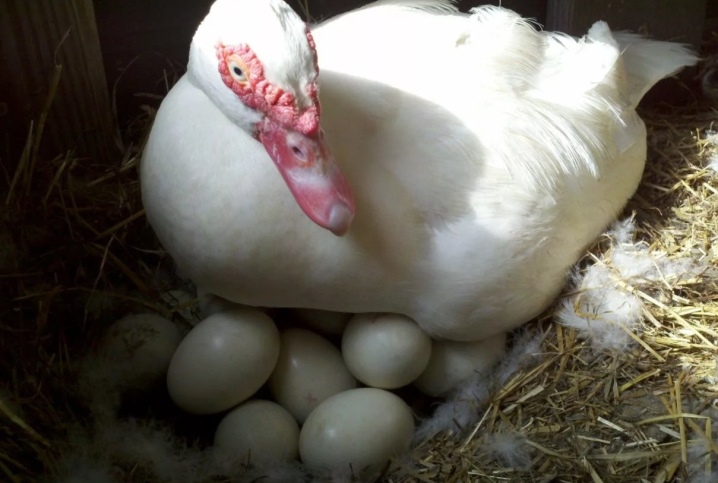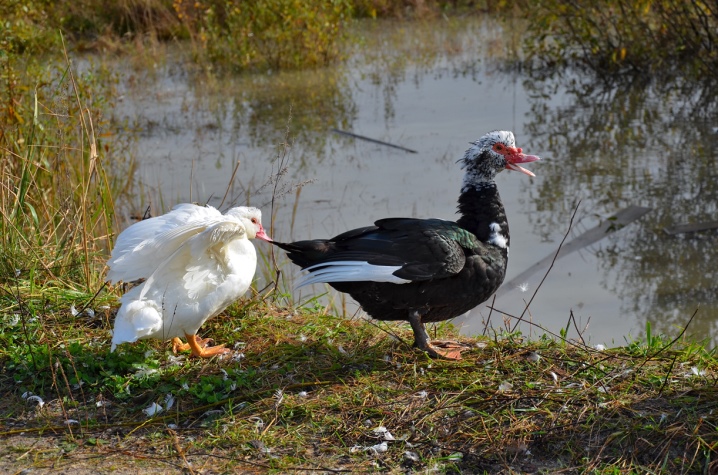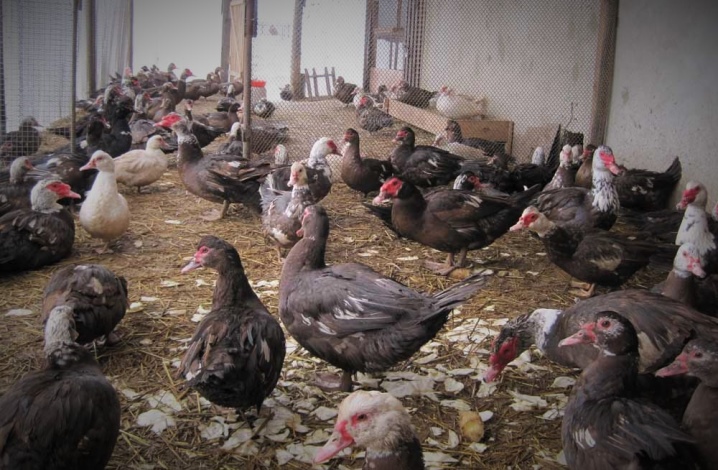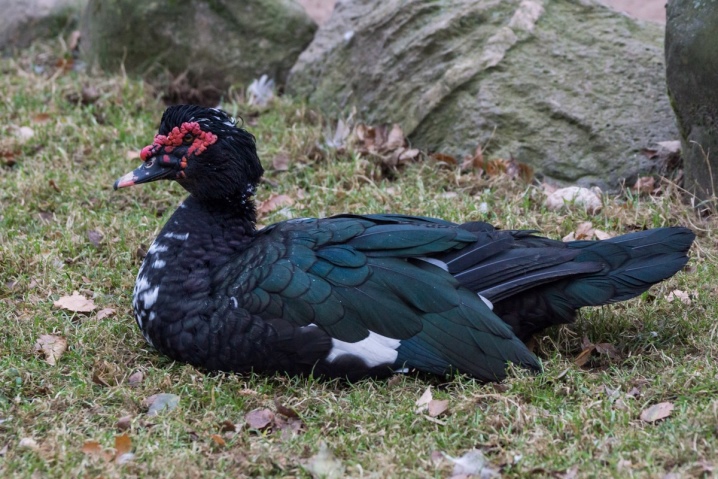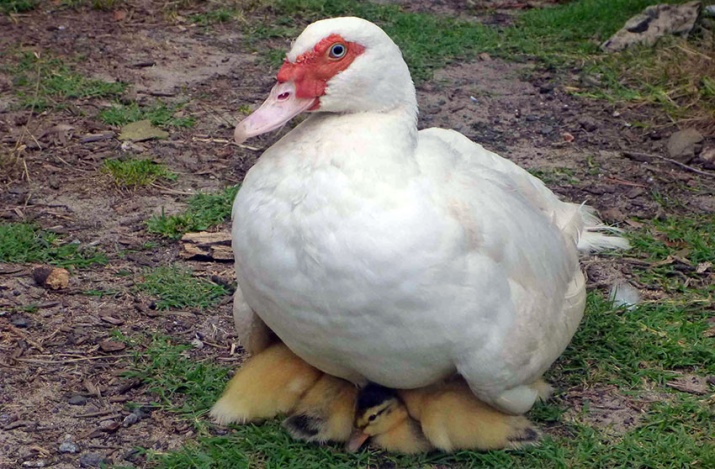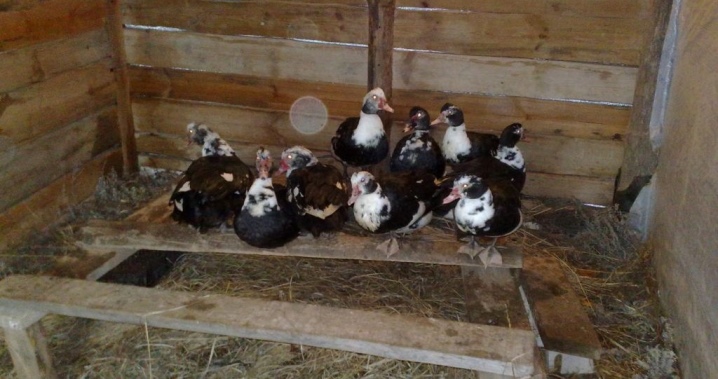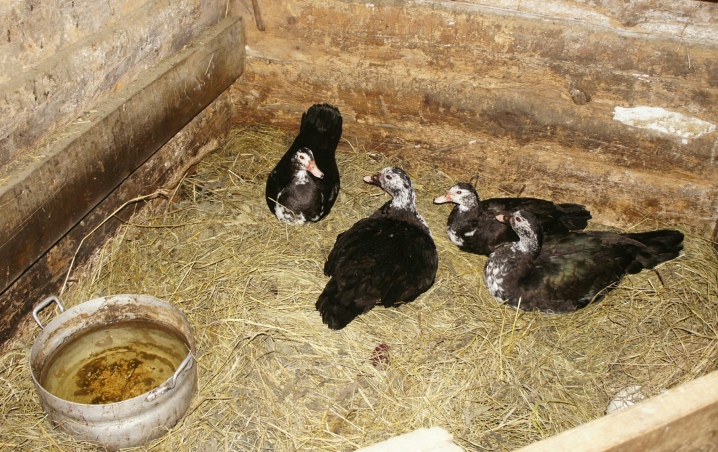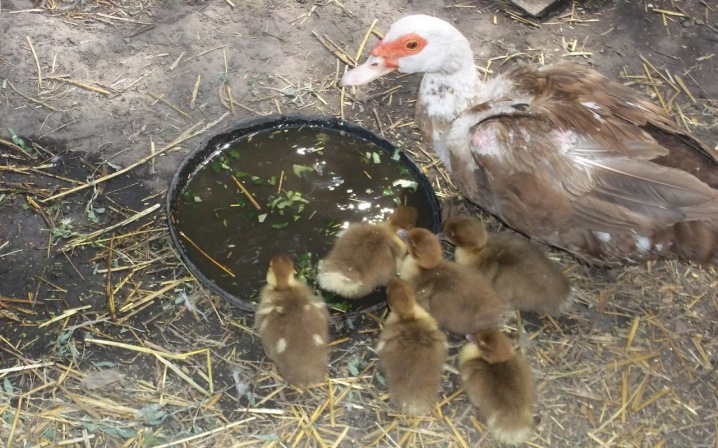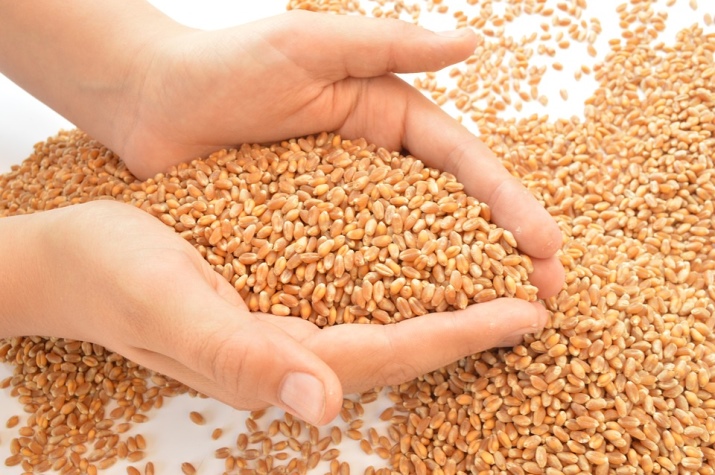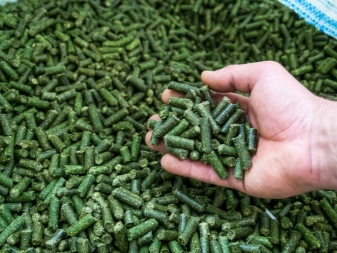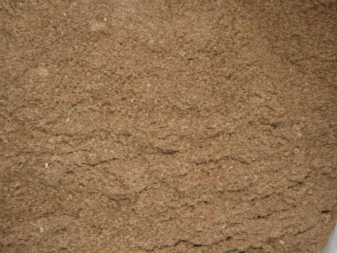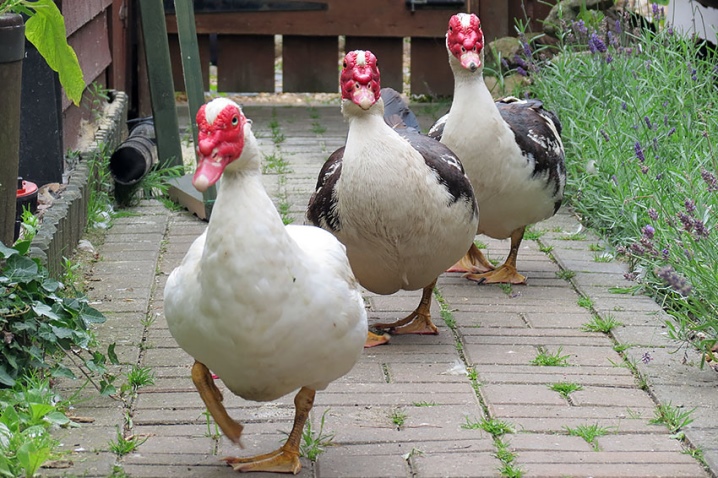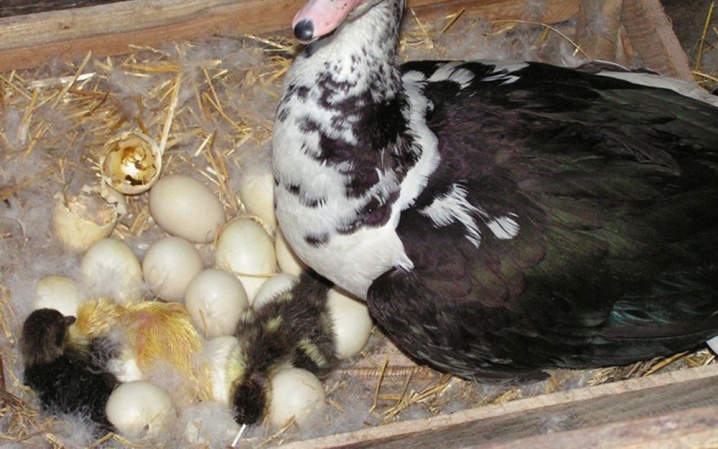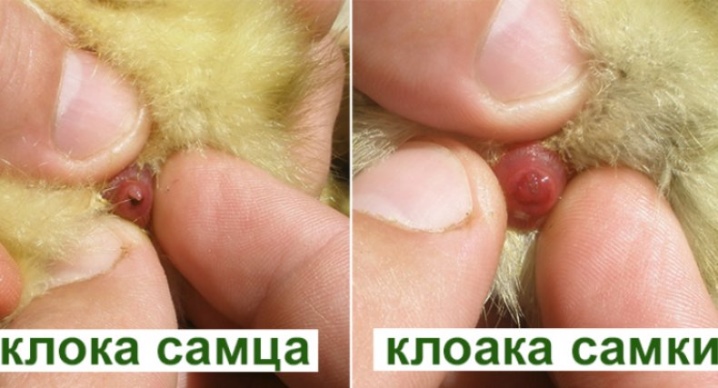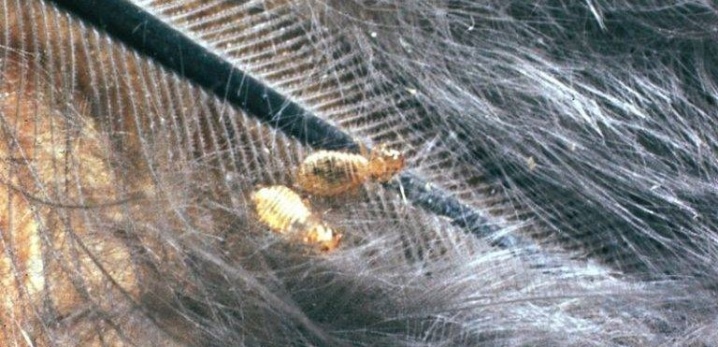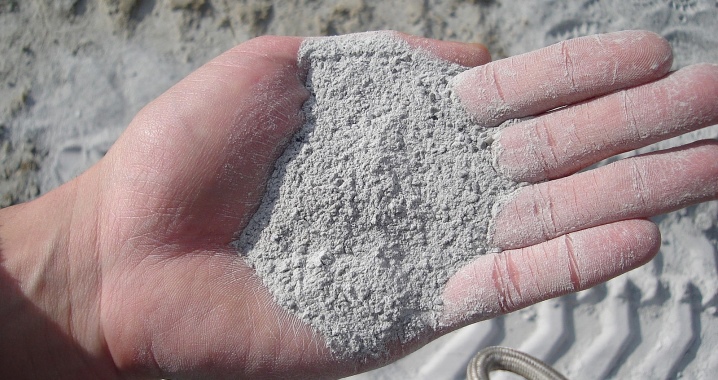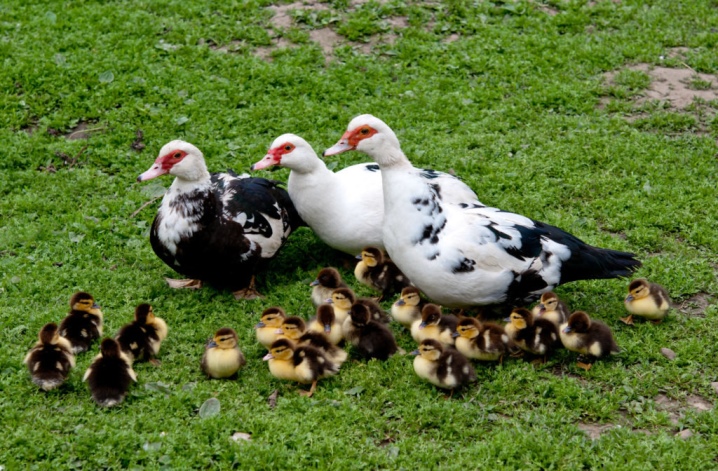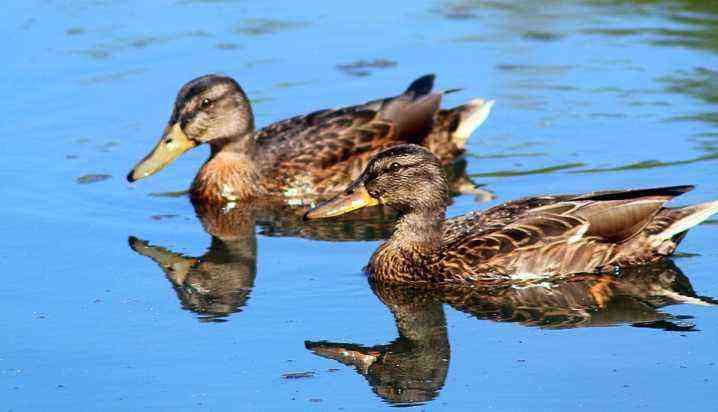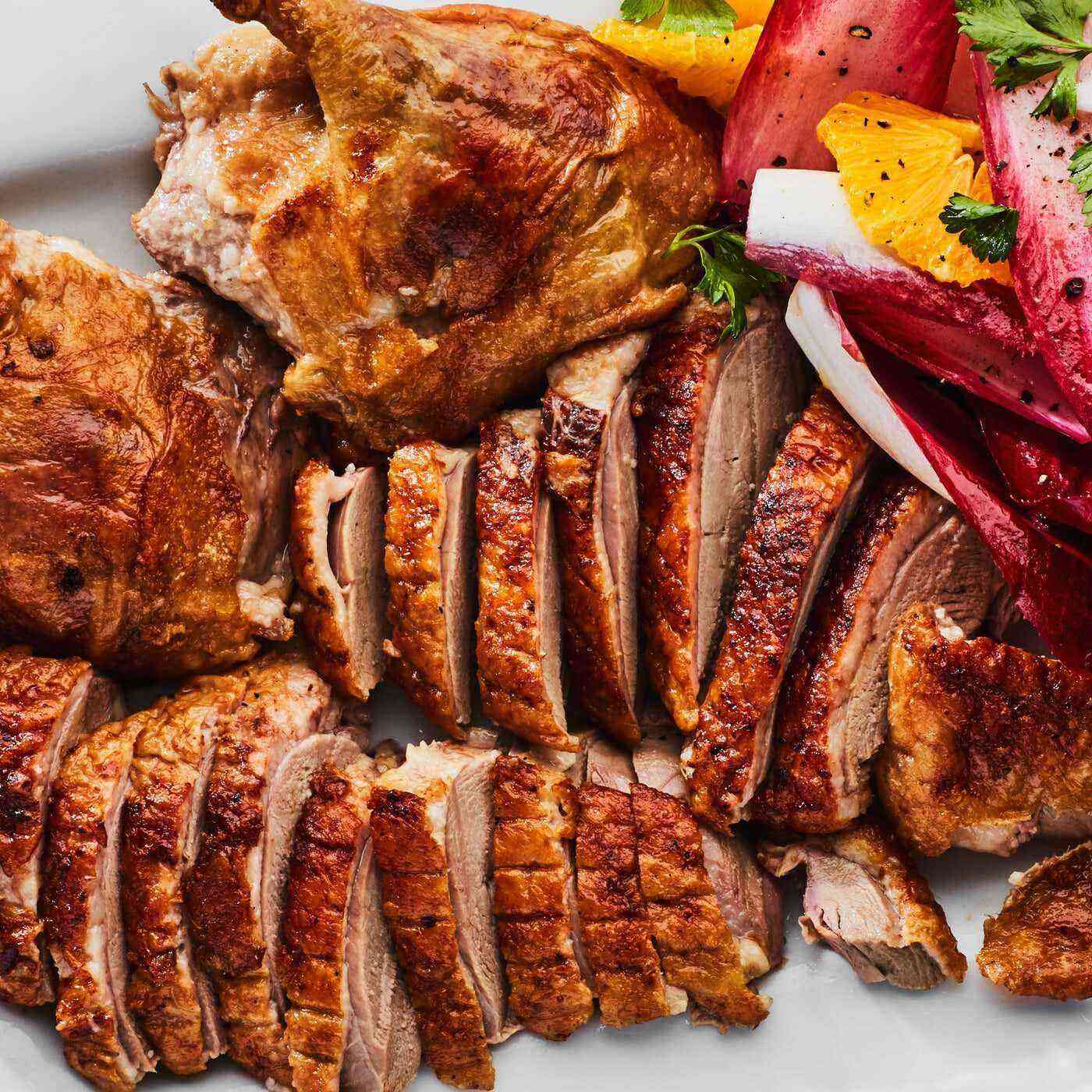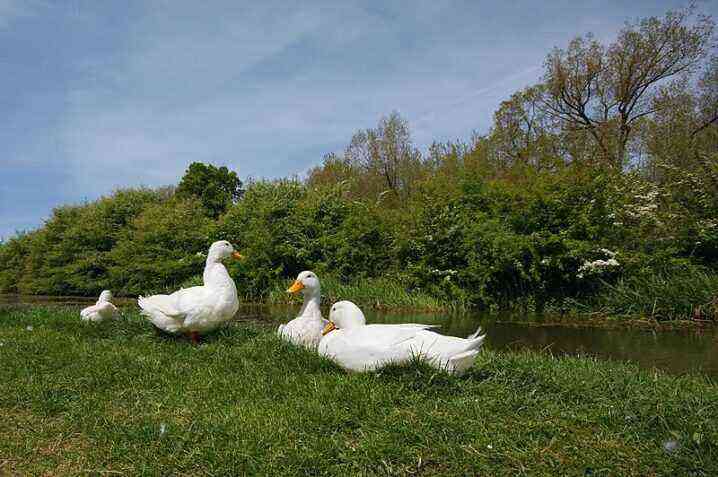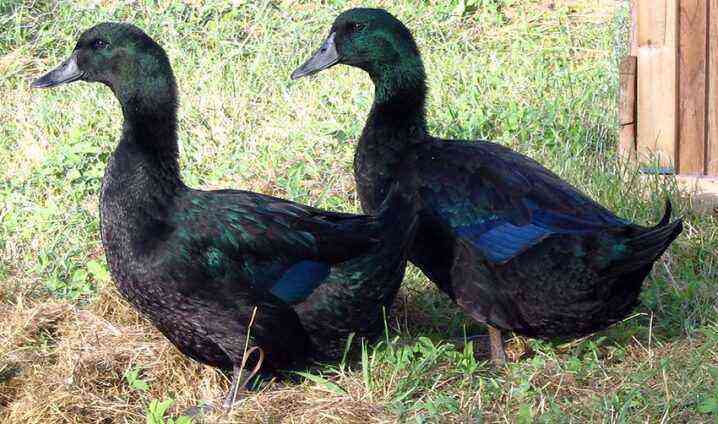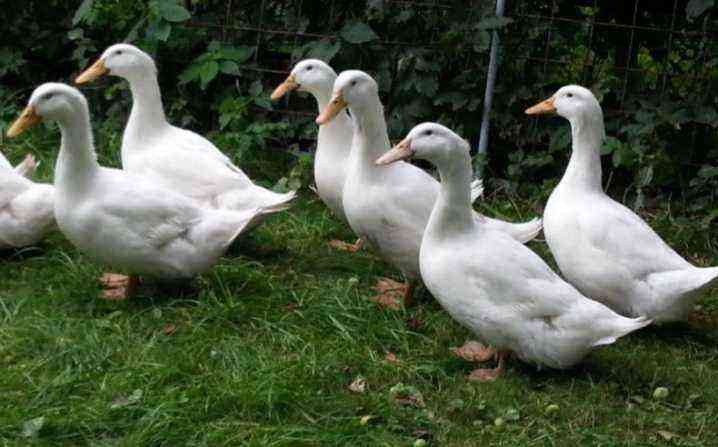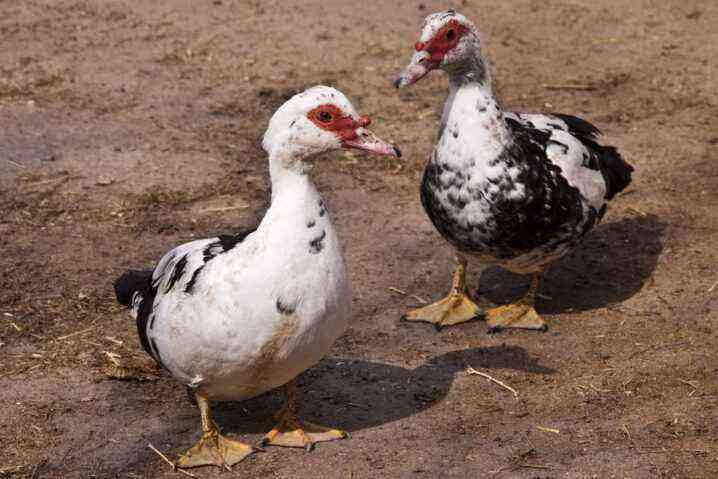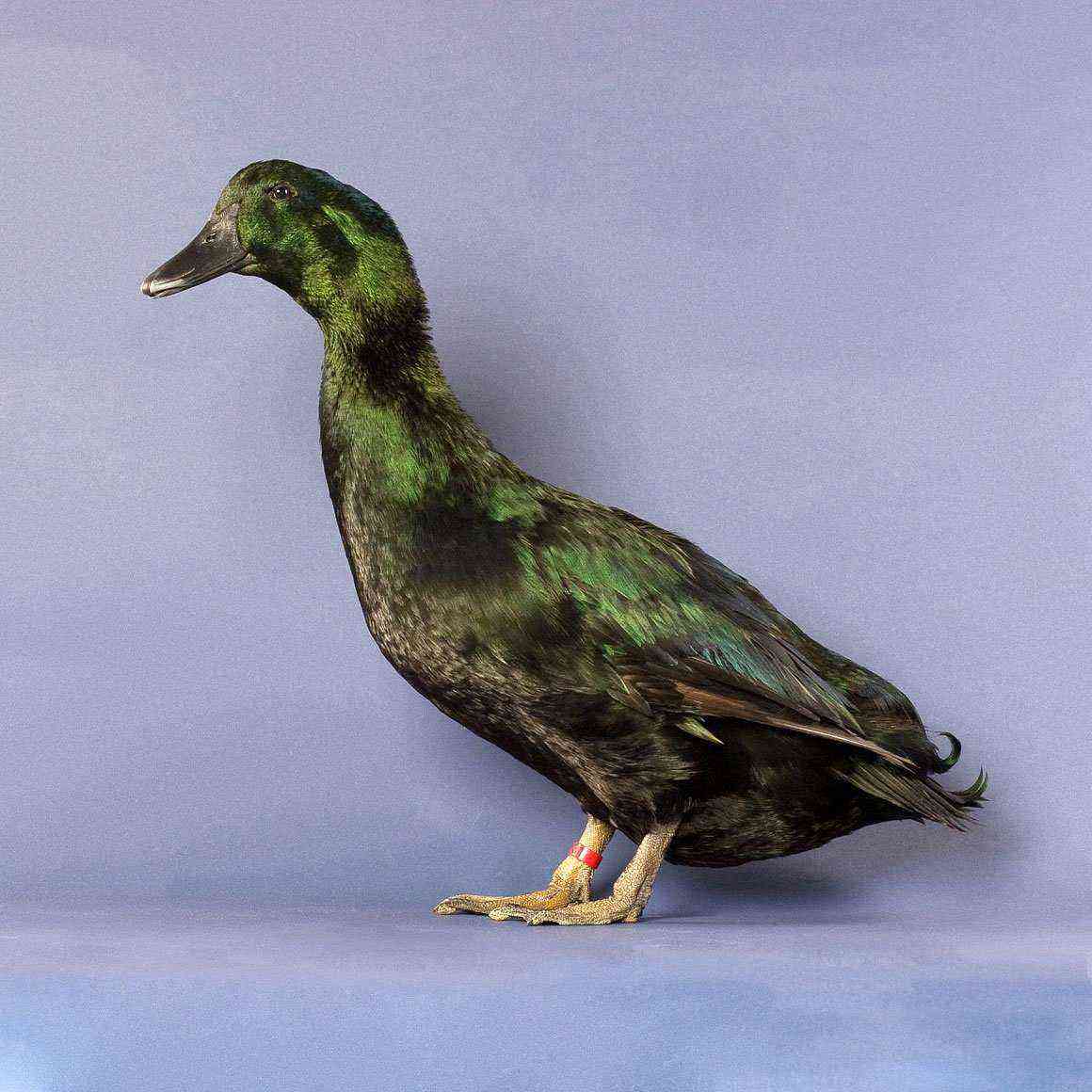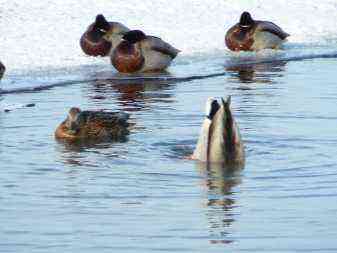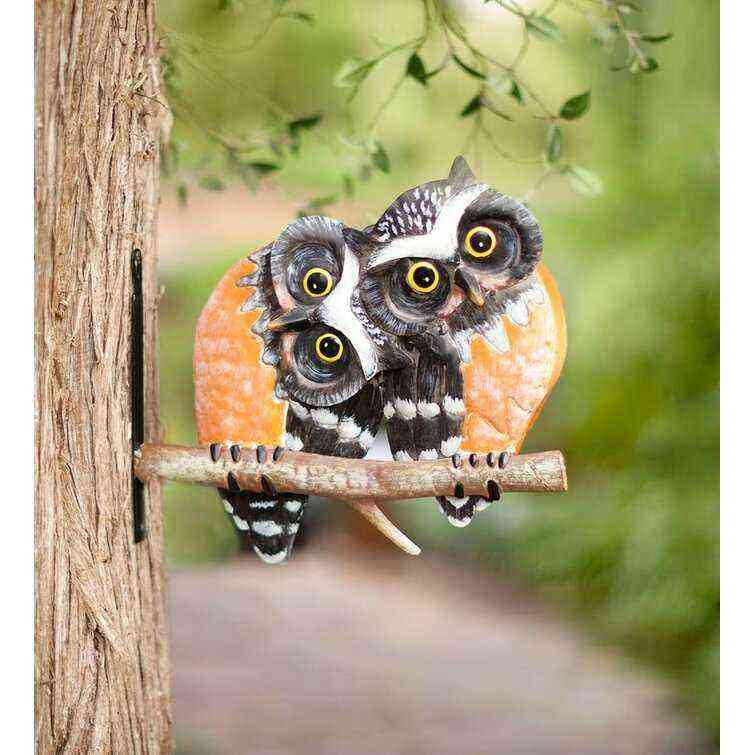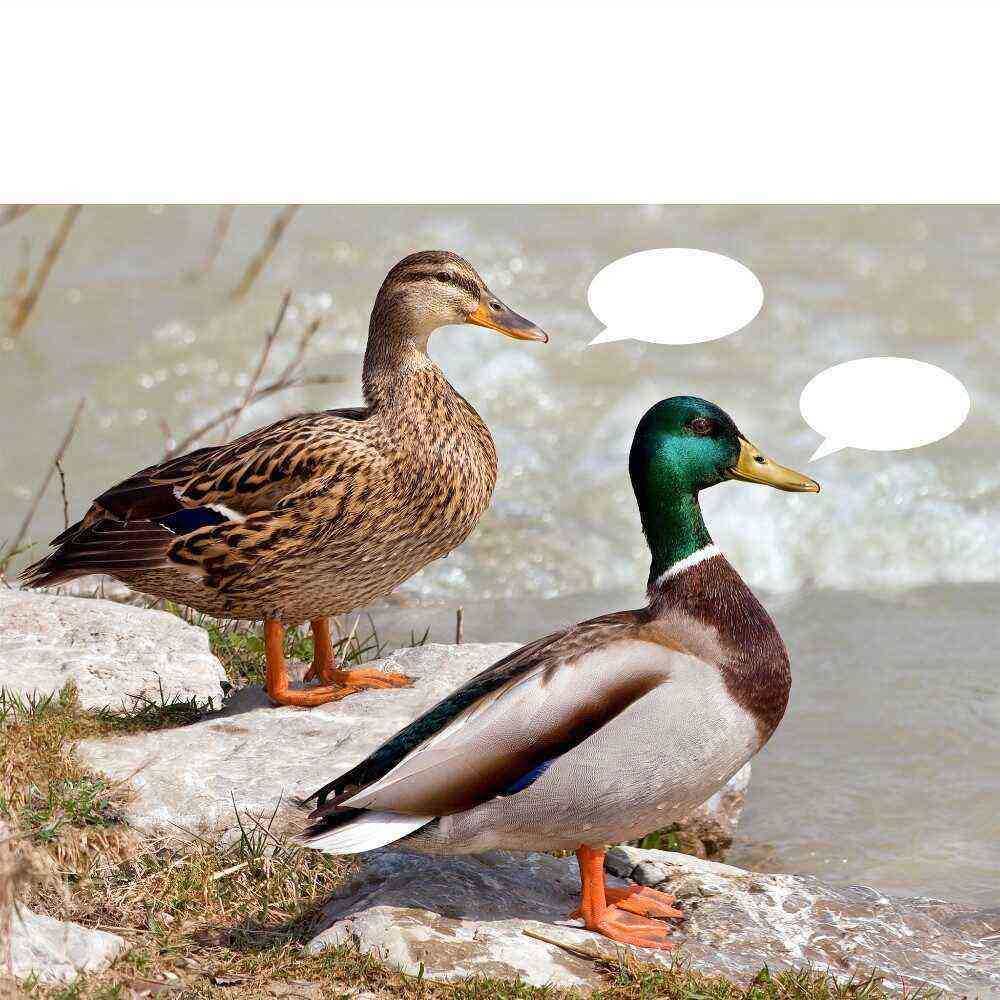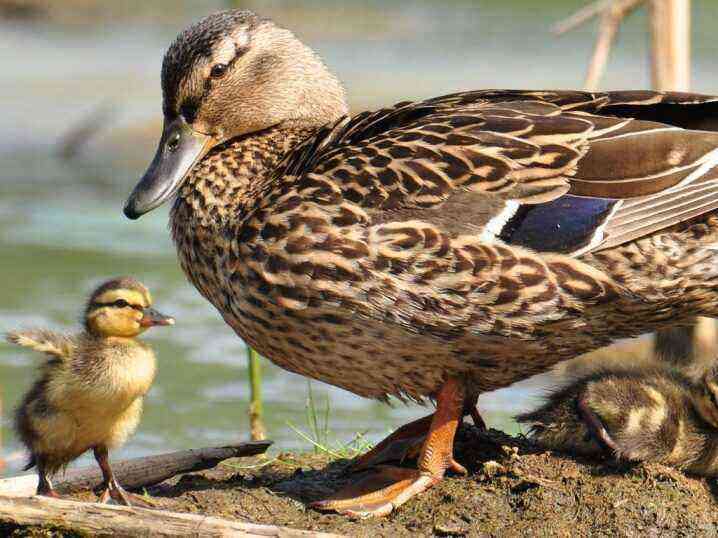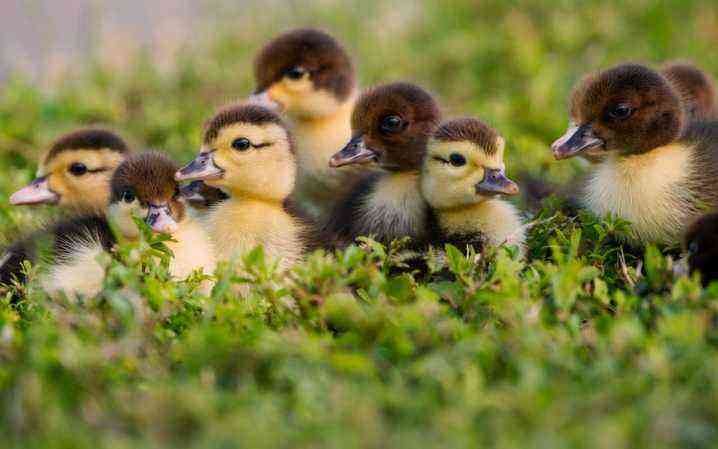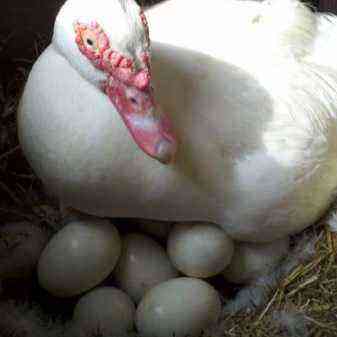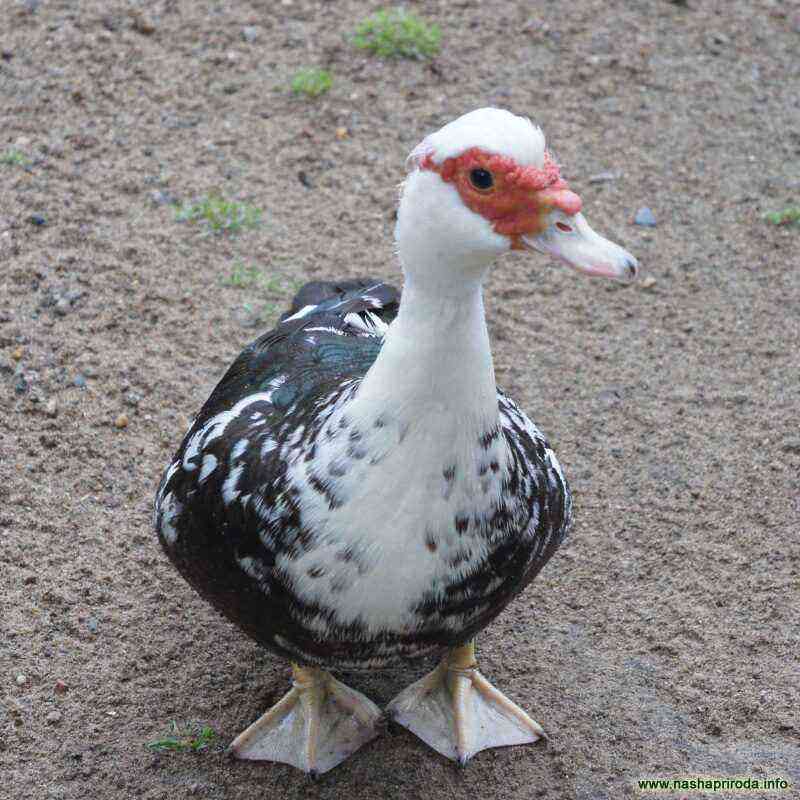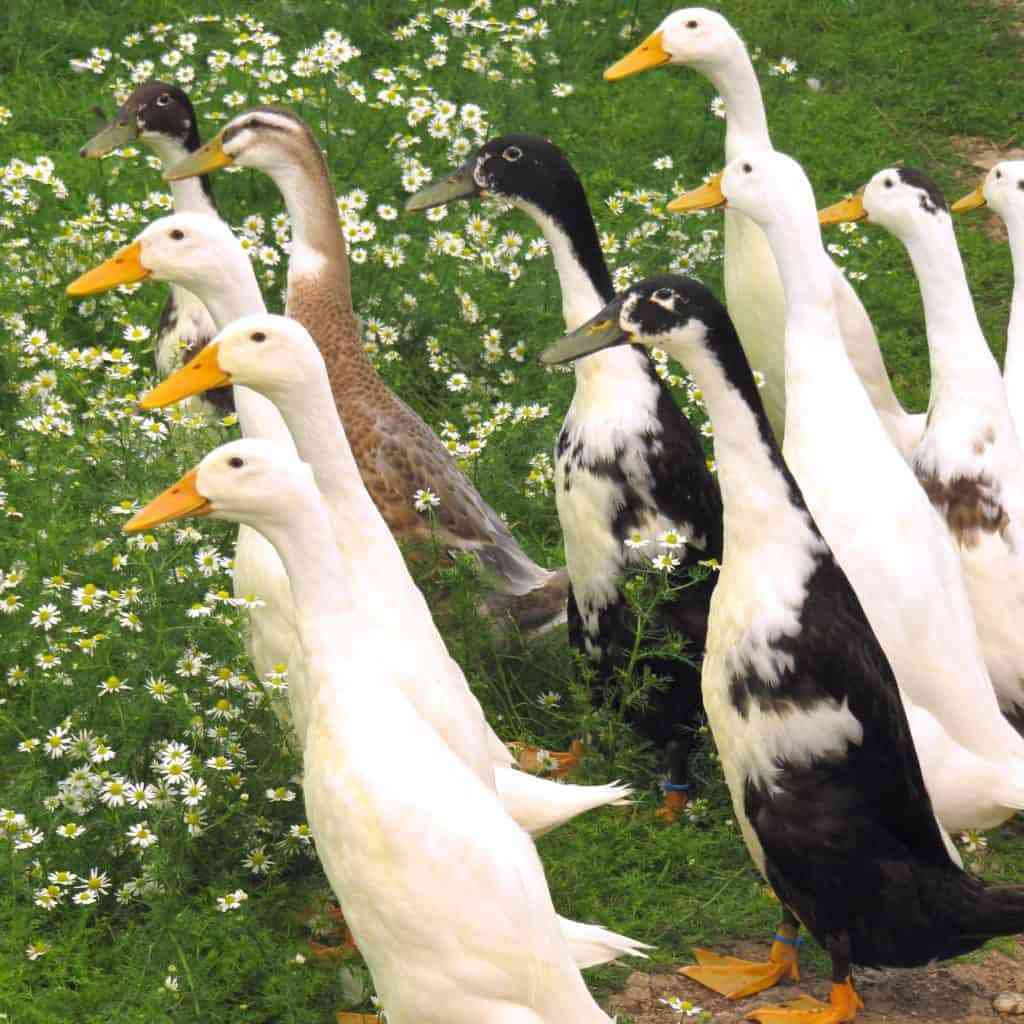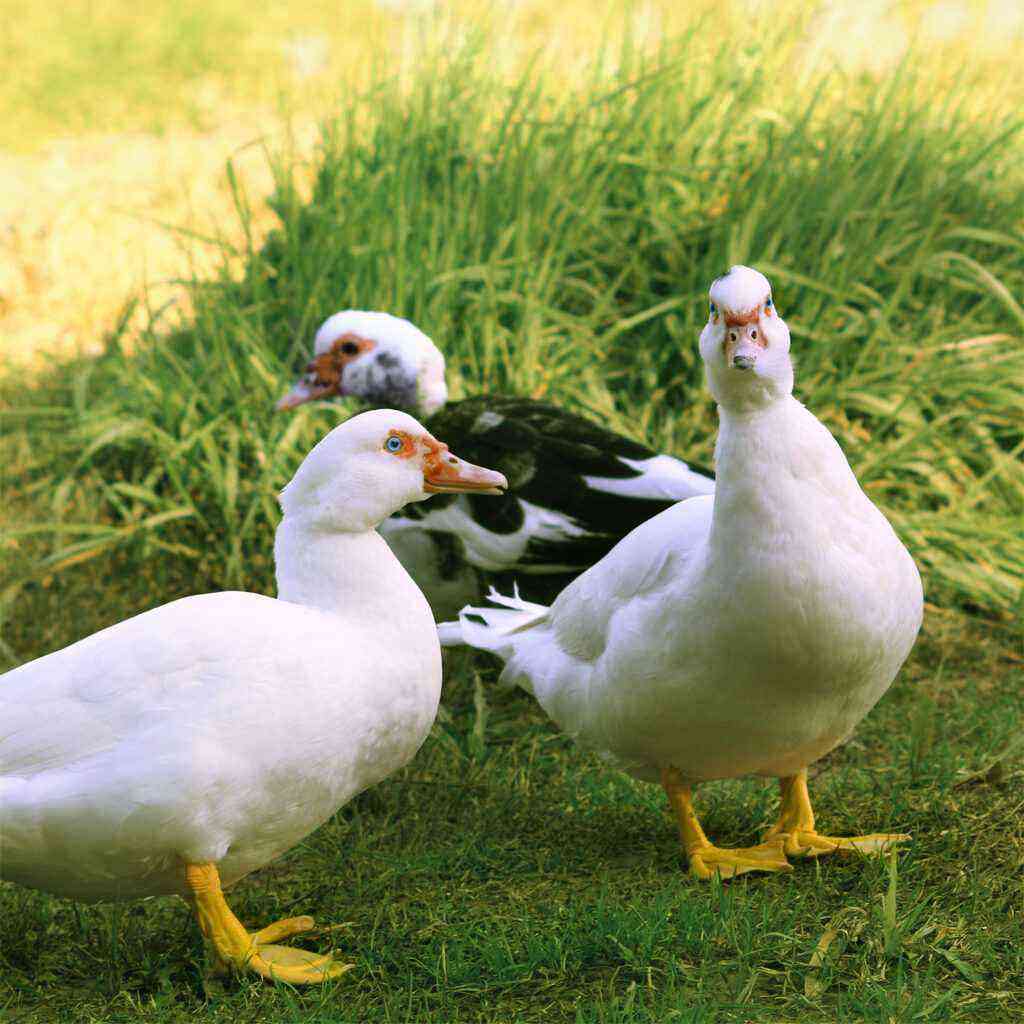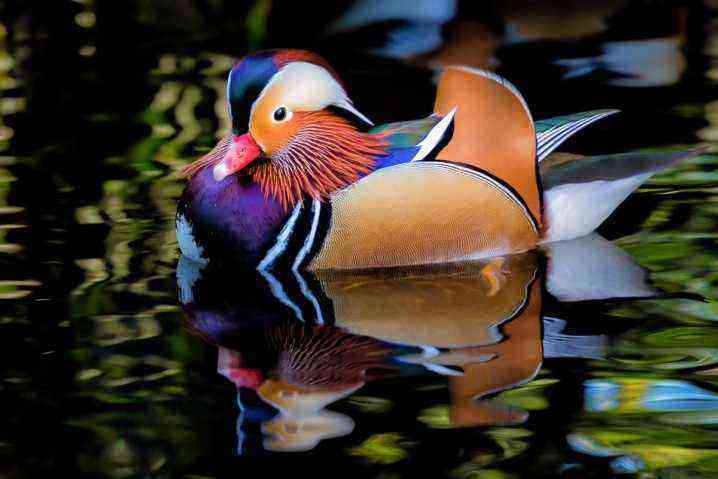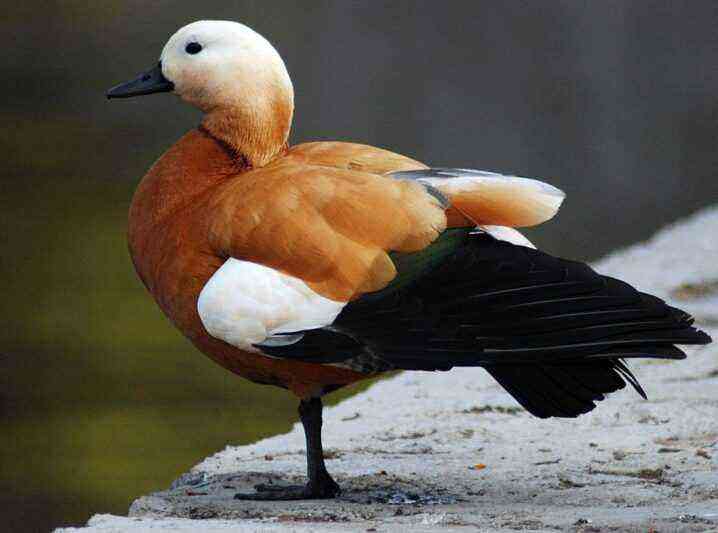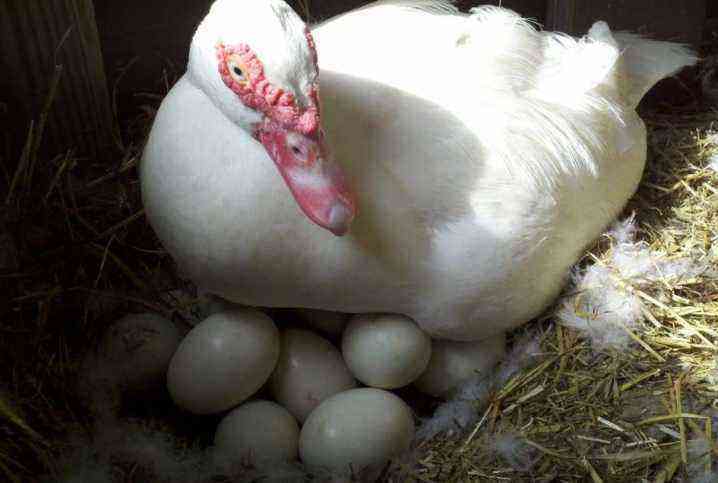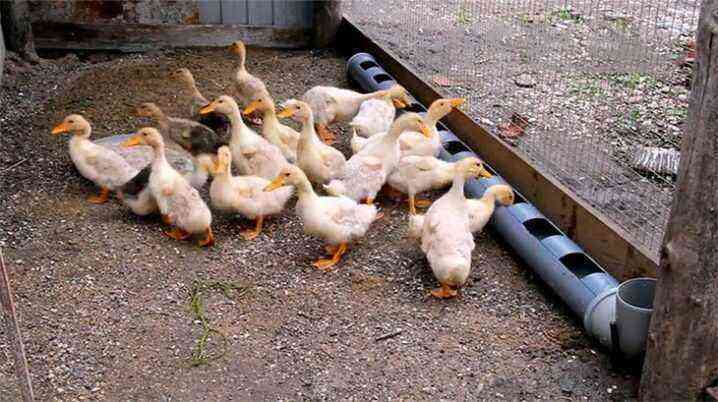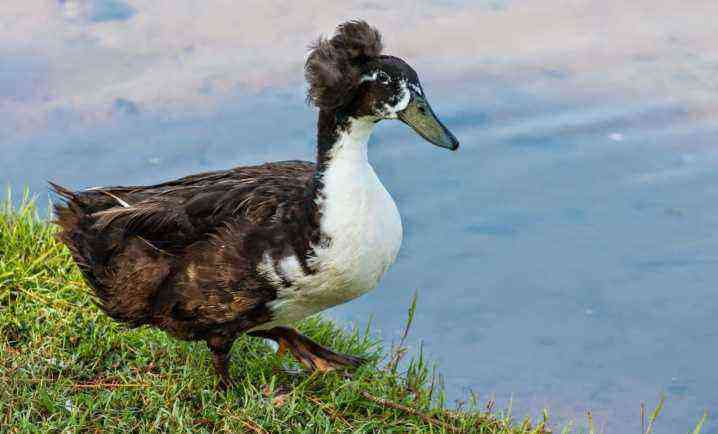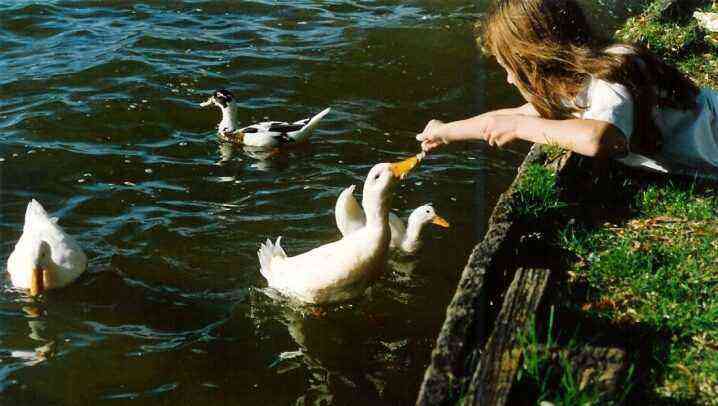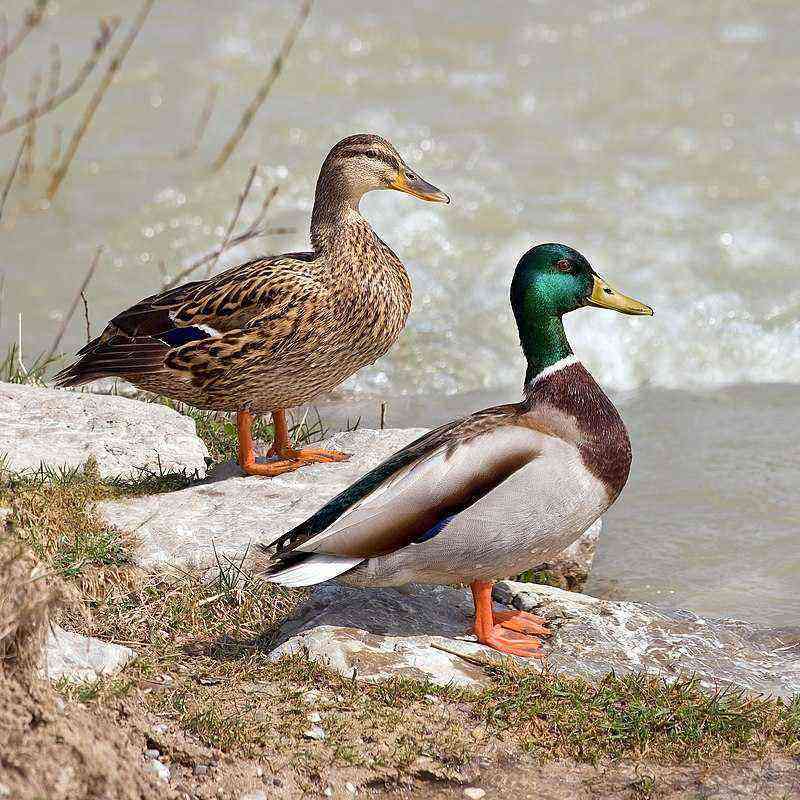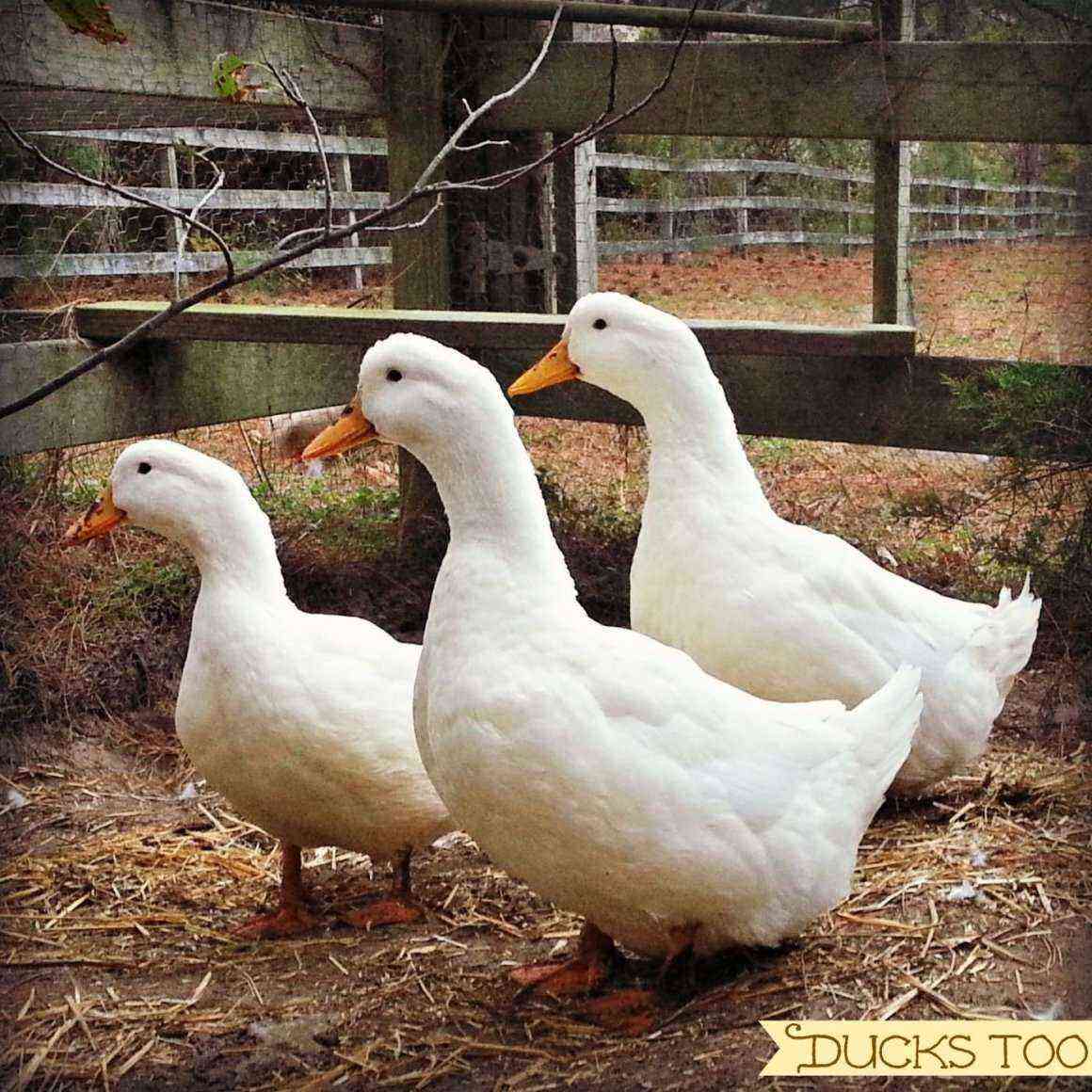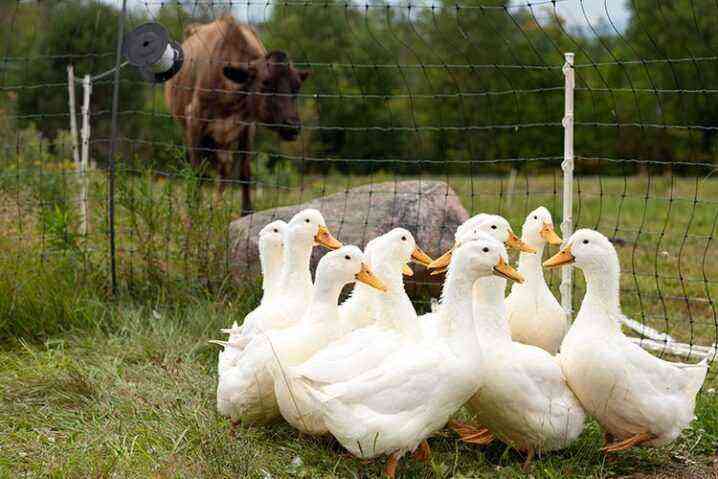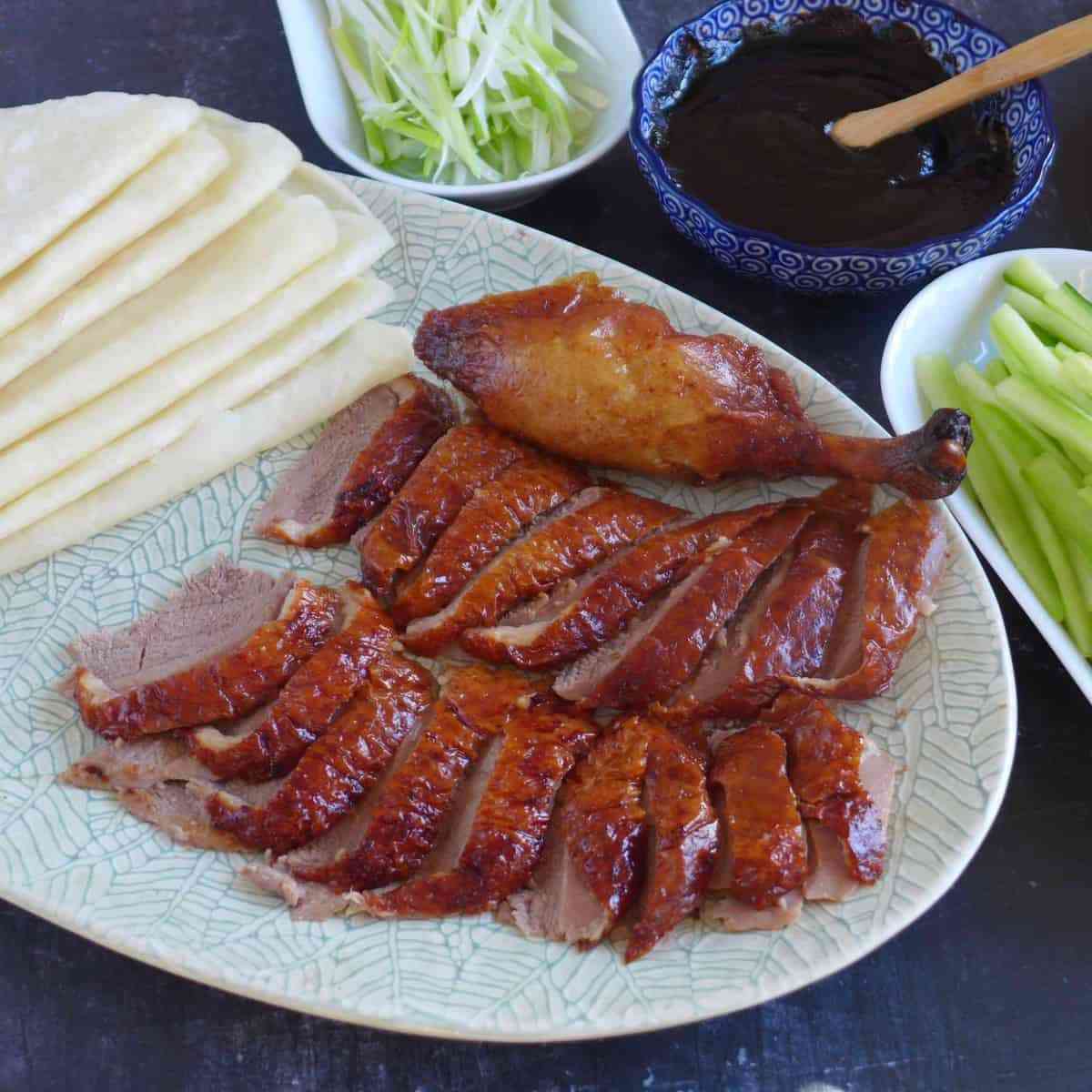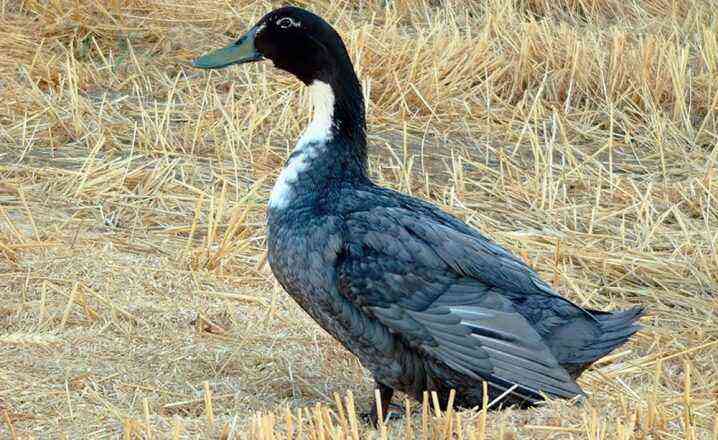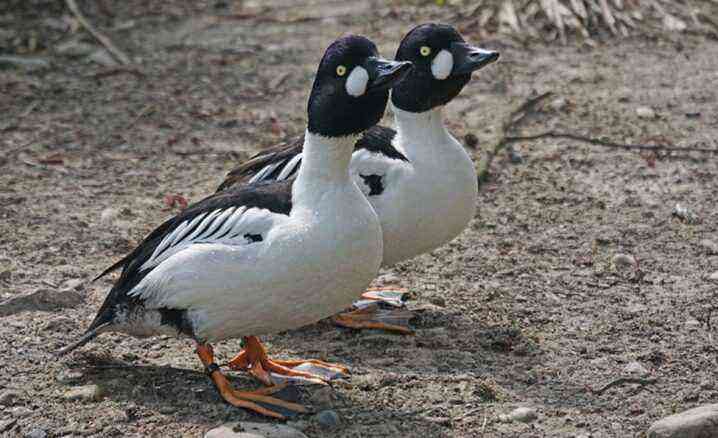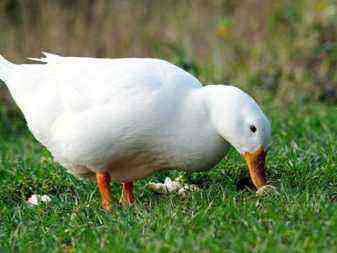Indo-duck, also known as Muscovy duck, has spread quite widely throughout our country in recent decades, but a significant part of poultry farmers still do not have experience in breeding it. Those who have tried say that this is a very productive and undemanding bird, which, among other things, also provides delicious meat. If you are interested, you should learn a little more about such living creatures, because it is not a “copy” of an ordinary domestic duck.
Features and history of appearance
By its very name, this bird is capable of confusing an ignorant person. Contrary to popular belief, this bird has nothing to do with India (but it is related to the West Indies – the Caribbean), and it also does not emit musk. There are several theories at once, how this duck became “musky”: some say that the fat released from old individuals on the head smells like musk, others produce the name from the Colombian Indians “Muisca”, others generally associate it with an English trading company called “Moscow” – allegedly it was she who brought the Indian to Europe.
Other names for the same bird are the Barbary duck, or mute duck.
In many sources, the domestication of such a bird is attributed to the ancient Aztecs who lived in Mexico, but the first description in a written source of a European author notes the breeding of this species in Peru in 1553. Oddly enough, the colonialists did not immediately bring the new living creatures to their homeland – at first it moved to Africa with its similar natural conditions, and only then spread to the whole world. In the Soviet Union, the Indouka appeared only in 1981.
The musky duck looks in general about the same as the common duck – we observe similar sizes and the same color. In the wild, this bird has predominantly dark plumage, although there are occasional inclusions of white feathers on the wings. Domestic varieties in terms of color are much more diverse. The fundamental difference between the indo-duck and any other duck is the clearly visible bald outgrowths of a fleshy appearance located between the beak and the eyes – it is on them that strange-smelling fat stands out.
Males are much larger than their girlfriends – for example, a drake can weigh up to 3 kilograms in the wild, and from 4 to 6 in a domesticated one. Wild females weigh only up to 1,3 kg, but at home they can be grown up to 1,8-3 kg. Body length, of course, is also in favor of males – 90 cm versus 65 cm.
Productivity
Most farmers prefer to keep indoutok for meat – they have this product with a delicate texture and a pleasant taste. At the same time, the meat is devoid of a peculiar smell, which is inherent in most varieties of domestic duck. Muscovy duck is often referred to as lean duck, although its fat content is very significant – up to 26%. At the same time, the amount of meat in its pure form is on average 54% of the live weight of a slaughtered individual.
In various sources, you can find different information about when is the best time to score an indout, however, in any case, this is a very precocious living creature. As a rule, living creatures are fed for at least 60 days – during this time, the female manages to gain about 1,2 kg of pure meat, while the drake grows more intensively and is able to produce up to 2,4 kg of the same product. However, birds are usually given a little more time to reach their maximum weight, so females are usually drunk at the age of 11 weeks, and males after another week.
It is important not to lose this moment, because after it the bird begins to molt, and in the process of molting it also loses its useful mass.
Feeding during this period becomes less productive, but if the moment for slaughter was missed, it is better to wait until the age of 120-130 days and slaughter pets only then. By this time, the Indochka will have had time to go through the process of molting and restore its original weight. Please note that now the mass is largely gained due to fat, because the meat becomes more juicy, but partially loses its lean characteristics.
In this case, in terms of egg production, the muscovy duck also has relatively good performance. 100-120 eggs per year does not seem like an impressive amount, but a weight of 70-75 grams compared to many domestic chickens seems like a real find. The product is distinguished by a significant protein density, as well as a certain bias towards the yolk in terms of weight and size.
Advantages and disadvantages
According to none of the indicators, the Indian duck is not a completely uncontested poultry, therefore the choice in its favor is logical only if it is made according to the totality of useful characteristics.
Experienced farmers usually highlight quite a few positive aspects of breeding this particular bird.
- The meat has a rather pleasant taste. Nature has found the optimal proportion of fat and meat fibers, in which the meat is still lean, but at the same time has a delicate texture due to meat inclusions. As described above, the breeder has the ability to adjust the amount of fat in the final product.
- Indians are relatively undemanding to care for. The ideal breeding and maintenance scheme may seem too complicated for a beginner, but in the case of any pet, few farmers adhere to all ideals.
- Muscovy duck has a fairly strong immune system. Of course, it is undesirable to leave it completely without vaccination, but even without it, it cannot be considered a sickly bird, and with a vaccination it is completely distinguished by lush health.
- The precocity of young people is favorably combined with the duration of active egg laying, because meat farms can easily breed young animals twice a year. Thanks to this, fresh tasty meat can be obtained throughout the summer and autumn.
- The indo-duck, like any other duck, is a waterfowl, but for it the presence of a reservoir on the site is not so important. Experienced poultry farmers note that the lack of the opportunity to swim does not particularly affect the Muscovy duck, while its relatives of other species may suffer from this.
- The owner, who has chosen the indoutok for breeding, saves himself from many hours of hubbub every day. This bird does not differ in noisy behavior and it is not for nothing that it is called a mute – it does not quack, but only periodically hisses, saving others from the typical bird noise.
- Drakes of this species are highly valued for their productivity. In most other species of birds, the abundance of males in the population is considered to be a minus, since this does not increase egg production in any way. In the case of Indo-ducks, which are still raised mainly for meat, males are a nice bonus for the breeder, since they are about twice as heavy as females, and grow to that size in the same time frame.
With all their positive aspects, these birds, of course, are not without certain drawbacks, otherwise they would have long ago forced out any competitors from domestic poultry yards. Of course, they have fewer minuses than pluses, but the farmer must be aware of them before buying young animals.
- Indian women do not like high humidity very much, for them it is fraught with the occurrence of various diseases, from which neither vaccinations nor good innate immunity can save. For this reason, they can only be kept in a well-ventilated house, and the climate in some areas may not be conducive to their breeding in principle.
- Muscovy ducks cannot be kept in excessive crowding – these are not meat chickens that will sit in cages located in several tiers one above the other. For such birds, the possibility of movement is important, therefore both the house itself and the adjacent paddock should be quite spacious.
- Unlike the same chickens, indo-cats still fly relatively well. This is not to say that they are full-fledged flyers and are able to simply fly away, however, most paddock fences that were not built specifically for musky ducks can be overcome by them. Therefore, when purchasing such a bird for the first time, it may be necessary to re-equip the already existing infrastructure.
Varieties
Muscovy duck itself is a separate species, because some kind of large-scale classification is not provided for it. It should be noted that scientists distinguish two subspecies, the only difference between which is that one of them is wild and the other is domestic. The wild duck is also called the royal duck, it differs from its domesticated counterparts in its relatively modest size and plain, mostly dark plumage.
Accordingly, the description of domestic breeds suggests a much more impressive adult mass and a very rapid weight gain, which is normal for meat culture, as well as a significant variety of colors.
During the coexistence of the Indo-duck and the man, several different breeds of this bird were bred, which usually differ only in the shade of plumage. So, there are white with splashes and pure black birds, blue and chocolate, lavender and bronze musky ducks. Some breeders in their work focused not so much on changing the color of the plumage, but on masking the red warty growths that greatly spoil the appearance of the pet.
The domestic variety today lives on all continents except Antarctica, although in America the history of its breeding goes back several centuries, and in our country it is only 3-4 decades. At the same time, today wild populations are found not only in Central and South America, where they were domesticated, but also in some other regions – for example, in Australia, New Zealand and even Europe.
Apparently, these are the descendants of domesticated individuals that managed to fly away from fenced ranges, and, possibly, mixed with the local wild avifauna.
Conditions for keeping and care
Growing indouches at home in practice is not as difficult as it may seem to beginners. We will consider in detail all the features for beginners, but when you get used to these conditions and they become a habit, you will realize that everything is really much simpler than it might seem.
First of all, consider how to properly maintain such a bird. Please note that the above recommendations apply to indows of any age, it is simply not possible to productively grow young animals for meat or keep females for high egg production if they are ignored.
So:
- the indo-duck, unlike some other poultry, is not afraid of certain temperature fluctuations, which is a noticeable plus for the breeder;
- at the same time, high humidity poses a huge danger to the health of birds, therefore the poultry house must be equipped with an effective ventilation system;
- hay-straw bedding requires regular and timely replacement, since cleanliness is desirable for the normal life of musky ducks;
- requirements for a high level of hygiene also apply to equipment that must be washed periodically to prevent the spread of dirt and infection;
- food should not be stale in the feeders of the aviary – if the ducks have not eaten it, you need to remove the excess before the process of decay begins;
- indoutok cannot be settled more densely than 4 adults or 8 ducklings per square meter;
- in the territory allotted for walking, there should not be any foreign sharp objects – this means not only glass or nails, but also too sharp branches that can injure the paws, and if swallowed, also the internal organs;
- despite the fact that the Indians supposedly do not need a reservoir at all, the presence of open water will benefit them, therefore farmers are advised to put large basins of water on the site or even dig special ditches where the bird can swim;
- the poultry house requires an annual treatment of all surfaces with slaked lime – this ensures disinfection and the elimination of any unwanted guests;
- the tasks of the breeder equipping the poultry house include equipping duck nests for laying eggs – the principle of their creation is similar to arranging nests for chickens, one such place should be enough for three females;
- unlike many other birds, ducks are not released from the barn early in the morning – you usually have to wait until about 10 am so that the hens have time to lay their eggs;
- so that feathered pets do not arbitrarily leave the enclosure, it is customary for them to clip their wings.
Although the Indians are fine with some temperature fluctuations, a full-fledged Russian winter for these guests from the tropics, of course, is too difficult a test, because they usually build an insulated house for them. Heating as a whole is optional, but the temperature inside should never fall below zero, and we can talk about any egg production only at a temperature of 18-20 degrees Celsius.
The best option for insulating the barn is its internal lining with boards.
Despite the very small growth of these birds, the barn ceiling should not be located below 180 cm from the floor, although in many ways this is also done for the owner. Like other birds, Indo-ducks love perches raised above the floor, whose optimal height is about 25 cm above the ground. Feeders and drinkers should ideally be able to access the entire population at once. Note that the drinker should be relatively small – instinct will push the Muscovy duck to bathe, but in winter this is a very bad idea.
A short daylight hours during the cold season does not contribute much to the life of ducks, therefore, in our latitudes, it is customary to resort to artificial lighting. Excessive brightness is not required, but light bulbs should be chosen so that the proportion of electricity used in the equivalent consumption of an incandescent lamp is about 5 watts per square meter.
It is not difficult to organize nesting – to create a cozy nest, you can even use an ordinary cardboard box, which is leaned against the wall with the bottom. The optimal width is usually estimated at 35 cm, the nesting depth should be almost half a meter. The box is installed in a place where bright light from windows or from lamps does not fall, its bottom is lined with a 15-centimeter layer of straw or sawdust.
An important secret is that young mothers should take care of their offspring separately from those females who are just hatching eggs, therefore separate nesting “quarters” are made for them.
This is done because sometimes an Indian duck, seeing other people’s ducklings, considers them her own and completely abandons her own masonry. Nests must be located close to their own, separate feeders and drinkers. It is possible to lay other people’s eggs in a hen only after she has been incubating the clutch for at least two weeks, but the clutch volume can be increased immediately by two dozen.
Feeding
A very convenient characteristic for breeders is that such a bird is omnivorous. The only thing Muscovy ducks should always have access to is clean drinking water. An adult requires about half a liter of water per day, while the hygienic rule that requires regular replacement of the contents of the feeder and washing it also applies to the drinker, because in hot weather moisture can bloom, and in general is an excellent medium for transmission of infection from one individual to others.
For birds of this species, some factories produce specialized feed, which today can be purchased almost everywhere. At the same time, a large farm is often able to independently provide its pets with everything they need – you just need to know what can and should be included in the menu of birds.
A typical homemade mix is based on four grains in equal proportions – wheat, corn, oats and barley. To this grain base, you need to add a little lupine and peas, which will partially compensate for the lack of vitamins and minerals in the main ingredients. At the same time, full-fledged rapid cultivation on purely natural products is hardly possible today – most breeders advise adding a certain amount of synthetic vitamins to the diet, as well as food additives in the form of premixes.
The ideal diet for adult Indians is three times a day. Please note that another valuable component of the daily diet of Muscovy ducks is ordinary greens, which should make up about ten percent of the total volume of bird food. In the summer, birds that are provided with a full range simply do not need such an additive – they can find greens on their own, therefore this ingredient is not included in the menu option presented above. In winter, the owner will have to take care of finding such food and including it in the diet – usually, instead of fresh grass, they give either pre-harvested silage, or grass meal made from different types of legumes.
Despite the fact that Indo-ducks are considered primarily herbivores (not counting small insects, which they can also eat), it is customary to add fish or meat and bone meal to their diet. A similar ingredient is good as a source of various vitamins and amino acids of animal origin., as well as protein, which is practically absent in plant foods, and is extremely important for the formation of muscle tissue. Please note that high-quality meat and bone meal should only have a brown color, but not yellow – in the latter case, it can be argued that ground bird feathers are added to it. It is undesirable to use a mixture of a yellowish tint, because because of it, egg production drops in birds, in addition, cannibal tendencies often develop in chickens – something similar can happen with Indians.
Among other things, this product is also an excellent breeding ground for any pathogenic organisms, so carefully monitor the safety of flour, do not stock it in excessive quantities and safely throw it away if there are doubts about freshness.
Breeding
The big advantage of breeding indoutok is that, if the conditions are right, the population reproduces well – due to this, you can refuse the annual purchases of young animals or simply get more meat. When forming a population for self-reproduction, note that the normal sex ratio is three to five females for every drake. As a rule, ducks should be the same age, but the male can be equal in age or older, but not younger. In addition, inbreeding very quickly leads to the degeneration of the population, so it is customary to change the drake regularly so that it does not mate with its own descendants.
Until the ducklings reach the age of three weeks, representatives of different sexes are usually kept separately from each other., otherwise, when they grow up, they will perceive each other as relatives, even if in fact they are not. After three weeks, you can select individuals to create a new family and proceed to acquaintance.
If you do not intervene, laying occurs approximately at the end of March, but a farmer who has created comfortable conditions in the form of sufficient heating and lighting in the morning and evening can count on an earlier result.
The female gradually lays eggs until their number reaches at least 15-20 pieces, and only then is she taken to incubation. When the owner sees that the bird has finally switched to incubation, you can lay the hen and other people’s eggs, but not more than a dozen. We remind you that strange ducklings that mistakenly appeared near the mother hen can confuse her maternal instincts, and she will leave the clutch, considering the lost babies to be her own.
For the young to hatch, you will have to wait about 33-35 days. Newborns weigh only 50-70 grams, for the first half hour they should be left near the mother, after which they are usually taken to be dried under a lamp. If it is decided to allow the duck to raise offspring on its own, you need to return it at night, carefully placing it under the female’s side. In just one year, such a mother-heroine is able to breed and raise 40-60 babies.
The cubs, which are decided to grow up without the direct participation of the mother, are kept in a box under a warming lamp, a feeder and a drinker are immediately placed. It is important to keep the bedding clean – you need to change it at least once a day, some farmers advise doing this even twice. If the young are not raised for divorce, at first the ducklings are not divided by gender, but at the age of two weeks it becomes necessary – young drakes develop much faster, and therefore oppress the females, taking away food and the warmest places.
From birth, you need to feed the chicks with crushed grain, as well as boiled eggs, chopped herbs and bran. Instead of water, young people can be given milk – at an early age they digest it normally, and everyone knows about the benefits of this liquid for strengthening and developing a young body. Upon reaching 4 days of age, meat waste begins to be introduced into the diet of young animals; boiled potatoes can already be offered to 1,5-week-old chicks.
At the age of 2 weeks, young people are not only divided by gender, but they also begin to walk a little, letting them out of the box. The duration of walks starts small and gradually increases.
Despite the fact that Indo-ducks are waterfowl, independent bathing of young people is allowed only from the age of one month.
How to determine gender?
Separate keeping of males and females is fundamentally important when breeding indoutas, because the former always strive to fly away, but they don’t really need vaccinations, while the latter don’t try to escape, but they are more prone to disease. Among other things, it is also necessary to distinguish drakes from ducks in time because, with a disproportionate population, individual individuals can adopt the behavior of the opposite sex, which will not lead to anything good in terms of breeding.
Little ducklings practically do not differ from each other, which only complicates the task. If you have extensive experience in poultry farming, you can try to massage the vicinity of the chick’s anus – if a kind of small penis appears, then you have a drake in front of you, but the duck is determined purely by its absence, because there are simply no other signs. They say that this method works 100% even with day old ducklings, but it is not popular with us – there are not enough specialists.
The growing youth gradually begin to fledge, and this is another way to determine the sex – the process is faster for drakes, besides, they also have a darker and more beautiful color against the background of nondescript ducks.
In the future, the difference becomes more and more noticeable also because the adult male is about twice as heavy as the female.
Behavior can also tell the farmer who is who in his herd. The duck is usually calm and quiet, but the drake tries to be active and does not shy away from getting into a fight both with its own kind and with people. At the same time, he is gallant with a lady, especially during the breeding season – he can give way to her and turns from a bully into a gentleman.
Finally, only ducks usually differ in quacking, while drakes prefer to hiss.
Possible diseases
Muscovy ducks are praised by many owners for their rather strong innate immunity, but in nature there are no living organisms that are completely immune to any disease. Indian women are no exception, therefore, some problems are fought with preventive measures, while others are solved as they arise. It is worth considering what most often threatens livestock, and how to deal with it.
Of the external parasites, downy eaters are considered the most unpleasant enemy. These creatures look like small insects, whose length ranges from 1 to 5 millimeters. As the name implies, the pest feeds on the fluff and feathers of the bird, but it also does not disdain the top layer of the skin and even blood if open wounds appear on the body of the individual. Naturally, the presence of such unwanted guests is extremely uncomfortable for the bird, because it constantly behaves restlessly, sometimes goes bald, and under conditions of such stress, of course, it does not gain weight or rush too well.
In the wild, birds fight such pests on their own, taking the so-called “dry baths” – you must have seen at least once how birds try to “swim” in the sand, raising clouds of dust.
The natural method is notable for its good efficiency, therefore the farmer’s task is only to provide the necessary conditions, as well as to further increase the efficiency – for this, a package of purified food sulfur is mixed with the sand. All that is needed is to abundantly sprinkle the livestock with the resulting mixture, and also provide the Indochka with a separate trough with it, where additional “bathing” can be carried out.
Another common problem is goiter catarrh. The causes of the disease can be different – for example, the farmer fed the pets with low-quality food, or the bird itself mistakenly tried to swallow something foreign. Because of this, the goiter swells (which is the main symptom of the disease), blocking the airways, and in fact, with a lack of oxygen, the normal development of the body is impossible.
In addition to swelling, goiter catarrh can be identified by other characteristic features. The bird feels that something is stuck in its esophagus, therefore it behaves restlessly and often does not want to eat, even though it is high time for it to get hungry according to the schedule. In addition, there is a characteristic bad breath, which is not noted in healthy individuals.
If you managed to diagnose such an ailment, you should try to help the duck right there, even though it will resist. The sick individual must be turned upside down, holding the paws, and massaging the swollen goiter – if something is really stuck there, such a procedure may help the “lost” food either fall out, or still get into the stomach. Inflamed internal organs will inevitably give pain with further feeding with hard food, therefore it is advisable to transfer the affected individual to softer dairy feeds.
Even if it seems that now everything is in order with the bird, it is better to show it to the veterinarian.
Reviews
Indoutok in our country is not yet grown by everyone, but today this bird is familiar to everyone. Those farmers who have experience in breeding it usually have a positive opinion about such a breed – at least the bird is very good in its precocity and is a real find for meat breeding. At the same time, you do not need to constantly worry about any diseases – the minimum set of vaccinations almost completely solves the problem. The livestock behaves relatively quietly (at least against the background of other ducks), does not need a full-fledged reservoir, and the meat gives tasty – in a word, a worthy option for keeping on a farm.
Perhaps the only problem why these birds have not yet become the most popular pets is their relative demands for free space. In small private farms, it is easier for many owners to keep meat chickens for the same purpose.
See the video below for more on growing indows at home.

